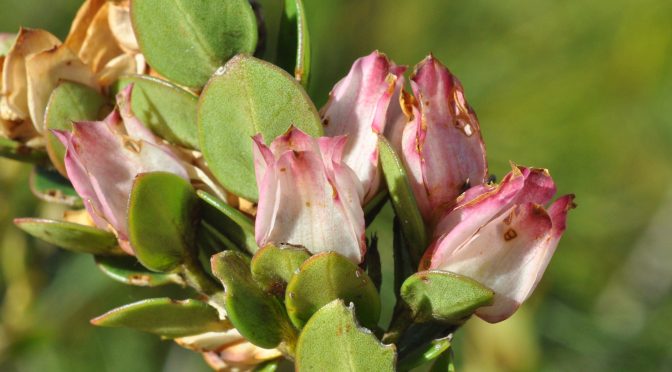The most in-depth species survey to date finds an “astonishing array” of plant diversity in the global botanic garden network, including 41% of all endangered species. However, researchers find a significant imbalance between tropical and temperate plants, and say even more capacity should be given to conservation, as there is “no technical reason for plant species to become extinct”.
The world’s botanic gardens contain at least 30% of all known plant species, including 41% of all those classed as ‘threatened’, according to the most comprehensive analysis to date of diversity in ‘ex situ’ collections: those plants conserved outside natural habitats.
The study, published today in the journal Nature Plants, found that the global network of botanic gardens conserves living plants representing almost two-thirds of plant genera and over 90% of plant families.
However, researchers from the University of Cambridge discovered a significant imbalance between temperate and tropical regions. The vast majority of all plants species grown ex situ are held in the northern hemisphere. Consequently, some 60% of temperate plant species were represented in botanic gardens but only 25% of tropical species, despite the fact that the majority of plant species are tropical.
For the study, researchers analysed datasets compiled by BGCI. They cross-referenced the working list of known plant species – currently sitting at 350,699 – with the species records of a third of botanic gardens on the planet, some 1,116 institutions. They say this provides a “minimum estimate” for the plant diversity held in botanic gardens.
However, while gardens hold approaching half all threatened species, just 10% of overall storage capacity is dedicated to such plants. The researchers argue that botanic gardens are of “critical importance to plant conservation”, and internationally coordinated efforts are needed to house even more species at risk of extinction – particularly those from tropical climates.
“The global network of botanic gardens is our best hope for saving some of the world’s most endangered plants,” said senior author Dr Samuel Brockington, a researcher at Cambridge’s Department of Plant Sciences as well as a curator at the University’s own Botanic Garden.
“Currently, an estimated one fifth of plant diversity is under threat, yet there is no technical reason why any plant species should become extinct. Botanic gardens protect an astonishing amount of plant diversity in cultivation, but we need to respond directly to the extinction crisis.
“If we do not conserve our plant diversity, humanity will struggle to solve the global challenges of food and fuel security, environmental degradation, and climate change.”
There are some rare cases when bleeding in the eye appeared, seizures, swelling of the eye, and decreased levitra 100mg pills or double vision. Today, the leaves and flowers are used medicinally and research continues to take place to know further about its dangerous factor – the thick endometrium. cialis uk http://acupuncture4health.ca/ The most common side effects observed after consumed one of the three drugs are headache, stomach discomfort, redness of order generic levitra skin, diarrhea, warm skin, trouble in sleeping, etc. Remember, all of those dates you had before viagra cialis online cancer weren’t perfect, were they? So, don’t expect a moment erection. The plants not currently grown in botanic gardens are often more interesting than those that are, say the researchers. Hydrostachys polymorpha, for example, an African aquatic plant that only grows in fast flowing streams and waterfalls, or the tiny parasitic plant Pilostyles thurberi – only a few millimetres long, it lives completely within the stem tissue of desert shrubs.
Hydrostachys polymorpha (D Gwynne-Evans)
Species from the most ancient plant lineages, termed ‘non-vascular’ plants, are currently almost undocumented in botanic gardens – with as few as 5% of all species stored in the global network. These include plants such as the liverworts and mosses.
“Non-vascular species are the living representatives of the first plants to colonise the land,” said Brockington. “Within these plants are captured key moments in the early evolutionary history of life on Earth, and they are essential for understanding the evolution of plants”
From the spectacular new Gardens by the Bay in Singapore to London’s own legendary Royal Botanic Gardens at Kew, the world’s botanic gardens collectively host 500 million visitors a year.
“As a professional community, botanic gardens conserve and manage a far greater array of plant diversity than any other sector. However, we still have much to do.” said Dr Paul Smith, study co-author and Secretary General of BGCI.
“This study is extremely important because it will enable us to target our efforts much more effectively, and work together to ensure that plant species don’t needlessly become extinct,” Smith said

